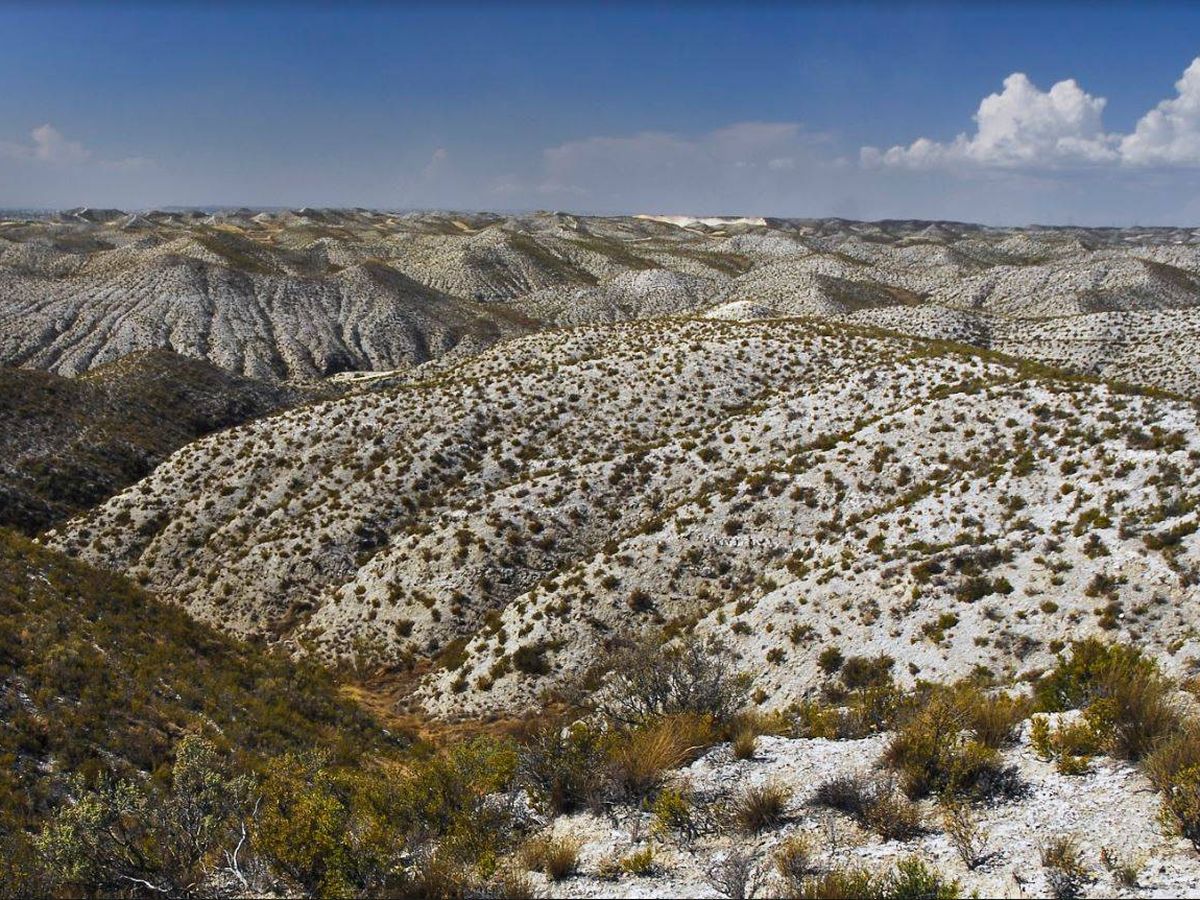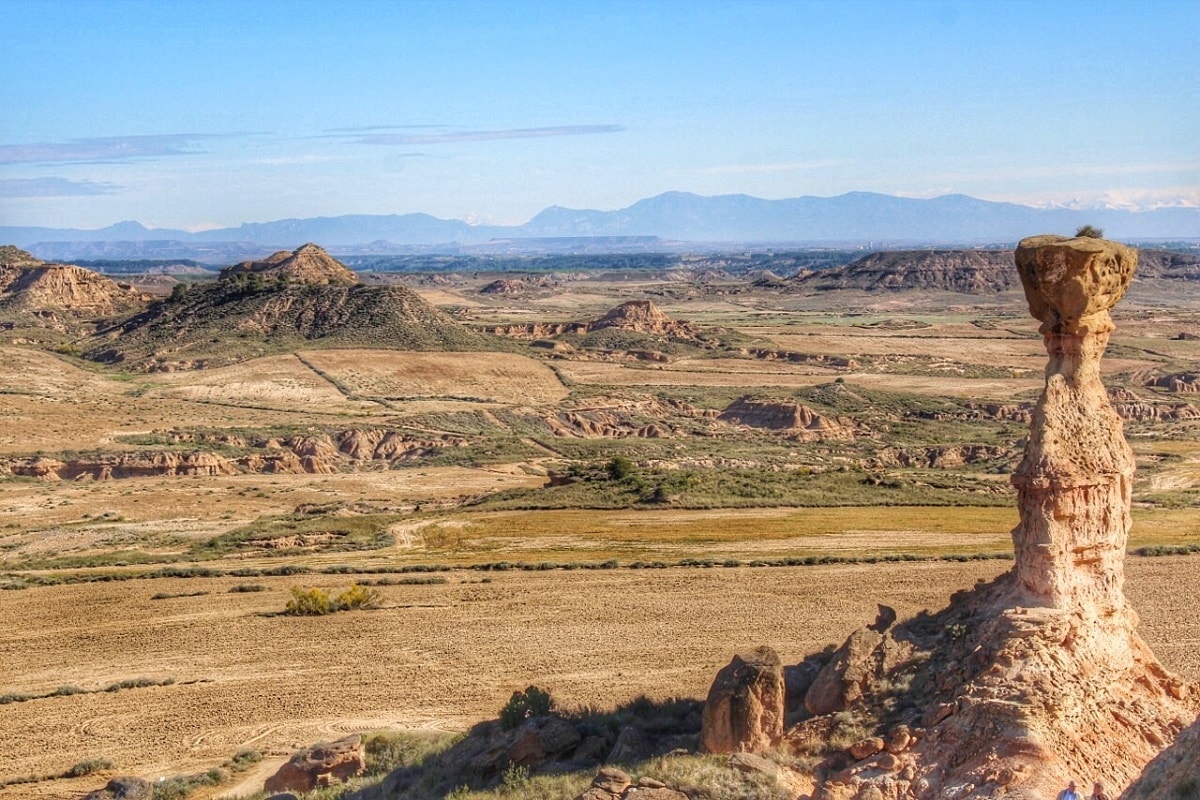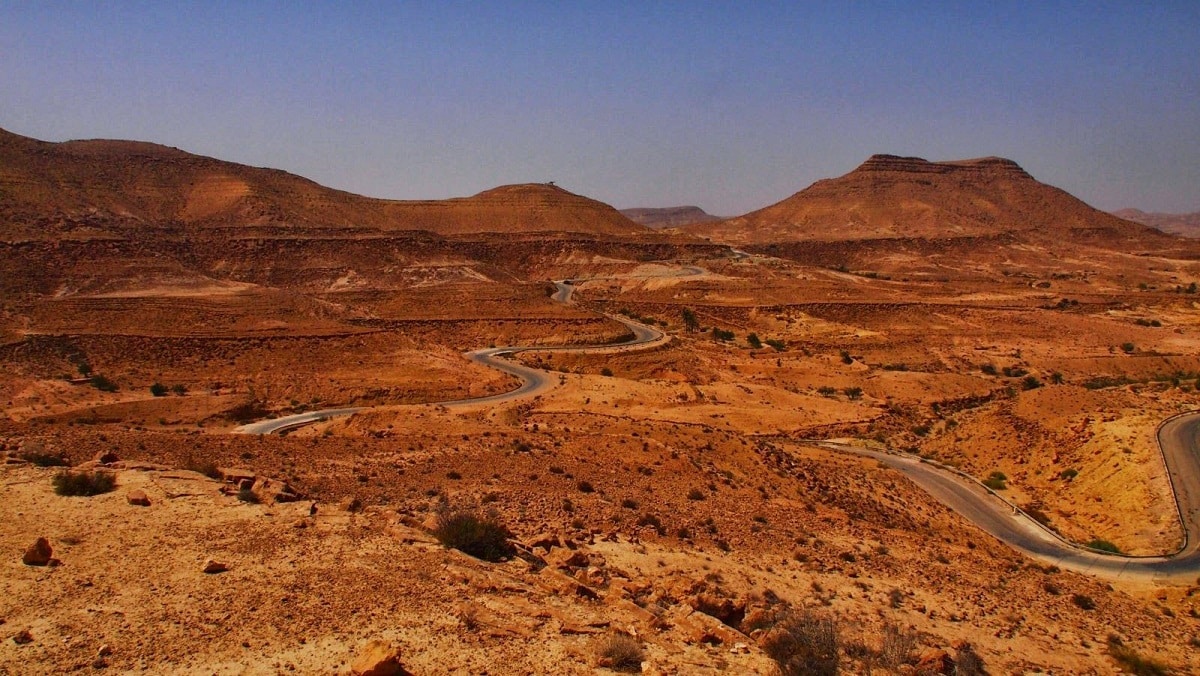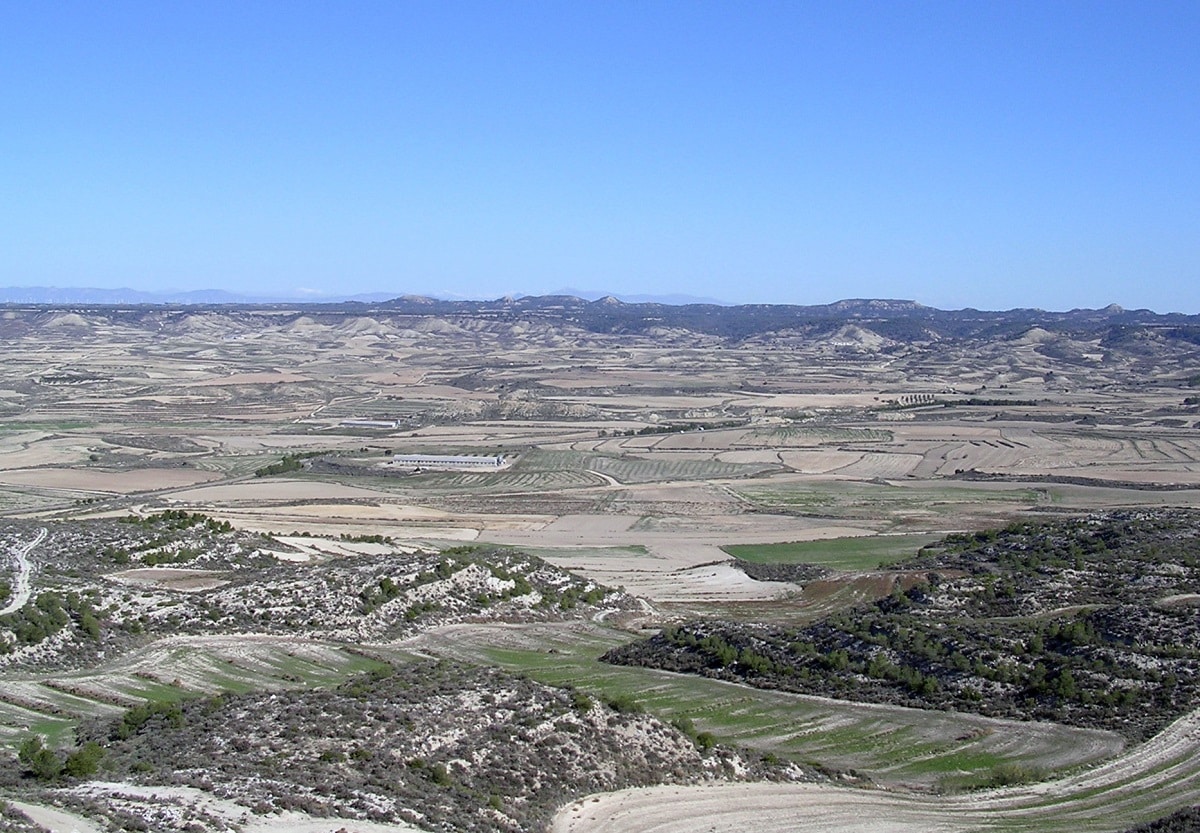
In Spain we have several types of deserts spread over the peninsula. One of them is the Monegros desert. Located in the Autonomous Community of Aragon, between Huesca and Zaragoza in the northeast of Spain, the Desierto de los Monegros occupies a strategic position due to its excellent transport connections with Madrid and Barcelona, two of the most important cities in the country.
In this article we are going to tell you about the characteristics, climate, flora and fauna of the Monegros desert.
Key features

This desert is not a desert in the style of those we usually imagine, since it is not a dry and arid place like the Sahara. Instead, it is characterized by its aridity and extremely dry climate, which makes it have a unique appearance.
One of the features Most notable of the Monegros desert is its barren and desolate landscape. The sandy plains stretch for miles and miles without any vegetation or trees. The terrain is flat and undulating, with small elevations and low hills in places.
In summer, temperatures can be extremely high, reaching over 40 degrees Celsius. In winter, temperatures are very low, making this place inhospitable to most forms of life.
Despite its inhospitable appearance, the Monegros desert is home to a large amount of wildlife. Birds of prey such as the golden eagle and the peregrine falcon are common, as are mammals such as the fox and the hare. In addition, there is a wide variety of reptiles and arthropods that inhabit the desert.
The Monegros desert also has a rich cultural history. There are numerous archaeological remains dating from prehistoric times, such as rock carvings and megalithic tombs. Also, there are several abandoned towns and villages in the area, indicating that this place was once inhabited.
Climate of the Monegros desert

The climate of the Los Monegros Desert is characterized by being a semi-arid Mediterranean climate, with very hot summers and cold winters. Summers are usually very dry and with temperatures that can exceed 40 degrees Celsius, while winters are cold and with frequent frosts. The average annual temperature is about 14 degrees Celsius, and the annual rainfall is about 350 mm.
In addition to the scarcity of vegetation, the arid climate of the Los Monegros Desert is also characterized by the presence of dry winds, which can cause dust and sand storms. These winds, known as north winds, tend to blow more frequently in autumn and winter.
Winter temperatures in Los Monegros average 10ºC, but they can go up to 35ºC during the hot summer months. Temperatures vary between 0ºC and 31ºC throughout the year, rarely falling below -4ºC or exceeding 35ºC.
The hottest season in Castejón de Monegros is from June 10 to September 10 with 27 ºC, the hottest month is July with a maximum of 32 ºC and a minimum of 17 ºC. The cool season occurs from November 16 to March 2 with an average temperature of 13 ºC, The coldest month is January with an average temperature of 0 ºC and a maximum of 10 ºC.
As for the rains, there is more precipitation in spring and autumn, especially in May and April, with summer and winter being the driest seasons. During those months, the drought intensifies, especially in July, when plants and animals must use their evolutionary development to withstand inclement weather.
In winter, fog so often enshrouds the desert landscape that there have been times in the past when the sun could not even be seen.
Flora and fauna of the Monegros desert

The flora of the Monegros desert is quite limited due to the lack of water. The vegetation found here is adapted to the extremely dry climatic conditions and is characterized by its resistance and adaptability.
For this reason, we mainly find shrub-type flora, with plants such as esparto grass, thyme and rosemary. These plants have deep roots that allow them to draw water from the ground, allowing them to survive in the dry conditions of the desert. This desert is an area protected by the Natura 2000 Network.
Other plants that can be found in the Monegros desert include Aleppo pine, juniper, blackthorn, and mastic. These plants are common in cooler, wetter areas of the desert, where they can find more water.
Regarding the fauna, one of the animals The most emblematic of the Monegros desert is the Iberian lynx, an endangered species. Despite the difficulties presented by the climate, this animal has developed exceptional hunting skills that allow it to survive in extreme conditions. Other mammals that can be found in the region include the fox, marten, and wild boar. Unfortunately the Iberian lynx is due to become extinct in this area due to excessive hunting caused by the damage they supposedly caused to livestock.
Among the birds, the eagle owl stands out, a bird of prey that has developed exceptional night vision to be able to hunt in the dark of the desert. You can also find birds such as the swift or the bee-eater, which feed on insects and small invertebrates that inhabit the sparse vegetation of the region.
Rivers and wetlands provide a vital source of life for the region. Species of amphibians and reptiles can be found, such as the common frog, the bastard snake or the snouted viper.
geology and terrain
Los Monegros is a desert of hills, plains and canyons dotted with small lagoons or rafts that are formed by the rains in certain areas throughout the year. In addition to the easily accessible landscapes, we also find other steep, impenetrable, virgin and rugged areas with canyons, impressive shapes and reliefs, such as the Jubierre mountain range.
I hope that with this information you can learn more about the Monegros desert and its characteristics.